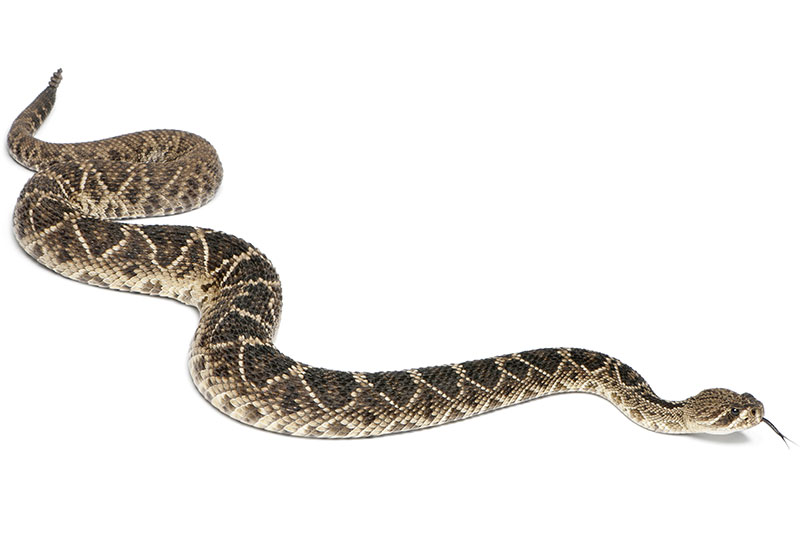
Rattlesnakes remain active
By Heather Karpel
Rattlesnakes populate much of San Diego County and Poway certainly has its share. These venomous reptiles are around most of the year but tend to be most prevalent during the warmer months.
Wildlife educator Mary Zanotelli revealed a few facts about rattle snakes in this area.
In San Diego County there are four types of rattlesnakes. There is the sidewinder, which lives in the desert and is a light brown color; the red diamond rattlesnake which is reddish, has a zebra striped tail and prefers brush and chaparral; the speckled rattlesnake which resembles granite and prefers rocky areas; and the southern Pacific rattlesnake which is yellow and brown, or yellow and black, and is found everywhere except for the desert. They are ectothermic, meaning their body temperature is regulated by external sources, so on cooler days you might find them sunning themselves. A good way to distinguish rattlesnakes from non-venomous snakes is to look at the shape of their head, which is triangular.

Rattlesnakes are venomous; however, their venom is not actually intended for predators. It is intended for prey. Rattlesnakes use their venom to paralyze their victims, typically rodents, and then they back away until the venom has taken effect.
Zanotelli explained that they will use venom against predators if they feel threatened, “but given the choice, the snake is always going to want to just move on” and not risk an encounter.
This means that rattlesnakes are not seeking out opportunities to bite humans, and they will not chase after you.
“When people get bitten by rattlesnakes, it’s when they’ve accidentally encountered them, like if they’re rock climbing and they put their hand on them, or they’re stepping over somewhere and step on a rattlesnake,” Zanotelli.
Another common way that people get bitten is by attempting to handle or kill a rattlesnake. It is recommended that you watch where you step when hiking, and keep dogs leashed.
The effects of bites vary, and they can be debilitating. Only a minority are lethal, though. Zanotelli explained that some are “dry bites” in which no venom is used.
One myth is that young rattlesnakes are more dangerous. This idea comes from the fact they may have less control over their venom glands and how much venom they use; however, they have smaller glands and less available venom to start with.
Rattlesnakes help with rodent control and they are protected animals in San Diego County parks. It is illegal to kill a red diamond rattlesnake in California. If you see a rattlesnake while hiking, it should be left alone. If it is close to a human populated area, it is recommended that you call a safe removal service. If you are in a park, call a park ranger. Zanotelli explained that the best thing you can do if you see a rattlesnake in the wild is to appreciate it from a safe distance.
“It’s such an exciting thing to be able to see a wild animal in its natural habitat and if you stick around and watch what it does, it’s fascinating,” she said. “We’re so lucky to live (here) to be able to have close encounters with these animals. But let’s not interact with them, let’s not try to feed them, let’s not try to kill them, let’s not try to affect their lives. Let them just live and they will let us live.”
In the event that you are bitten by a rattlesnake, the Parks and Recreation Department of San Diego County recommends the following: Stay calm. Do not use a tourniquet or ice on the area. Do not try to cut the area or suck out the venom. Wash your skin if possible with soap or an antiseptic wipe. Remove jewelry or tight clothing. Send somebody to call 911, or if you are alone, walk at a “relaxed pace” to a place where you can call 911. Seek medical attention as soon as possible.
